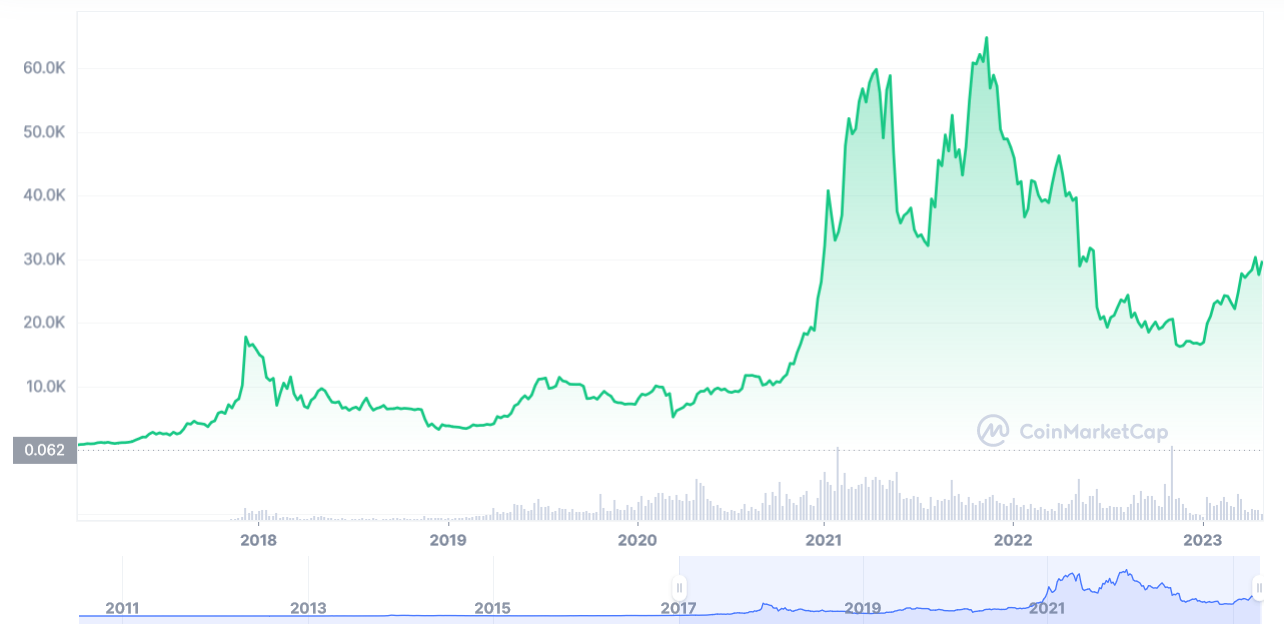The history of Bitcoin is a fascinating one. It began in 2008 when an anonymous person or group of people known as Satoshi Nakamoto published a white paper outlining a new digital currency called Bitcoin. The paper proposed a peer-to-peer electronic cash system that would allow users to transfer money without the need for a central authority.
Since then, Bitcoin has grown to become the world’s most popular cryptocurrency. It has been adopted by a wide range of businesses and individuals, and its value has skyrocketed.
The first Bitcoin transaction took place in 2009 when Nakamoto sent 10 BTC to Hal Finney, a computer scientist and early Bitcoin adopter. This transaction marked the beginning of Bitcoin’s journey to becoming a global phenomenon.
In 2010, Bitcoin’s first exchange, Mt. Gox, was launched. This allowed users to buy and sell Bitcoin with other currencies. As the popularity of Bitcoin grew, more exchanges were created and the price of Bitcoin began to rise.
In 2011, Bitcoin was accepted by the first major online retailer, Overstock.com. This was a major milestone for Bitcoin as it showed that it could be used for real-world purchases.
In 2013, the price of Bitcoin skyrocketed to over $1,000. This was due to a combination of factors, including increased media coverage and the launch of the first Bitcoin exchange-traded fund.
Since then, Bitcoin has continued to grow in popularity. It has been adopted by a wide range of businesses and individuals, and its value has continued to rise.
Today, Bitcoin is the world’s most popular cryptocurrency. It has revolutionized the way people think about money and has opened up a world of possibilities for businesses and individuals alike.
Bitcoin is a digital currency that has been gaining traction in recent years. It is a decentralized, peer-to-peer system that allows users to send and receive payments without the need for a central authority or bank. Bitcoin is often referred to as a cryptocurrency, as it uses cryptography to secure transactions.
Bitcoin is created through a process called mining. Mining involves solving complex mathematical problems in order to create new blocks of data, which are then added to the blockchain. The blockchain is a public ledger that records all Bitcoin transactions.
In order to use Bitcoin, you will need to set up a wallet. A wallet is a digital storage space where you can store your Bitcoin. You can use a variety of wallets, such as a desktop wallet, a mobile wallet, or an online wallet.
Once you have a wallet, you can buy and sell Bitcoin. You can buy Bitcoin from an exchange, such as Coinbase, or you can accept Bitcoin as payment for goods and services.
When you make a transaction with Bitcoin, it is recorded on the blockchain. This makes it difficult for anyone to double-spend or counterfeit Bitcoin.
Bitcoin is becoming increasingly popular as a form of payment, and it is becoming more widely accepted by merchants. It is also becoming more widely used as an investment, as its value has been steadily increasing over the past few years.
Bitcoin is still a relatively new technology, and it is important to understand the risks associated with it. It is important to do your research and understand the technology before investing in Bitcoin.
Bitcoin is an exciting new technology that is changing the way we think about money. It is a digital currency that is decentralized, secure, and easy to use. With its increasing popularity, it is likely that Bitcoin will continue to grow in the future.





